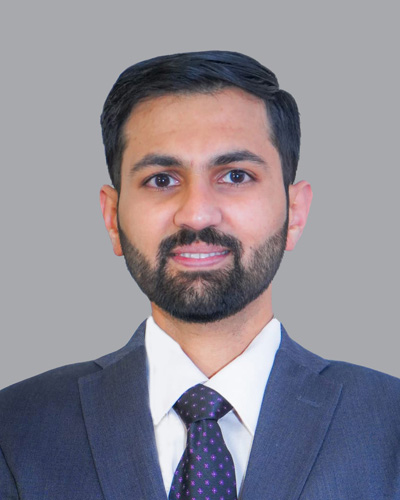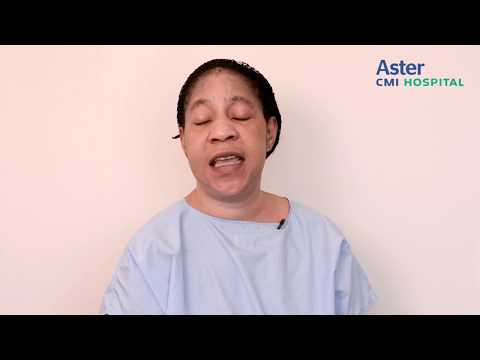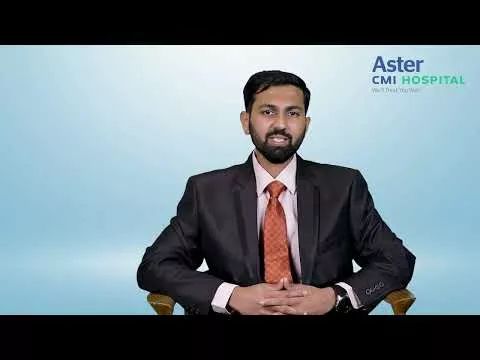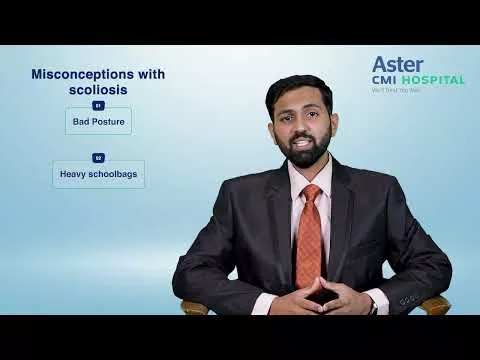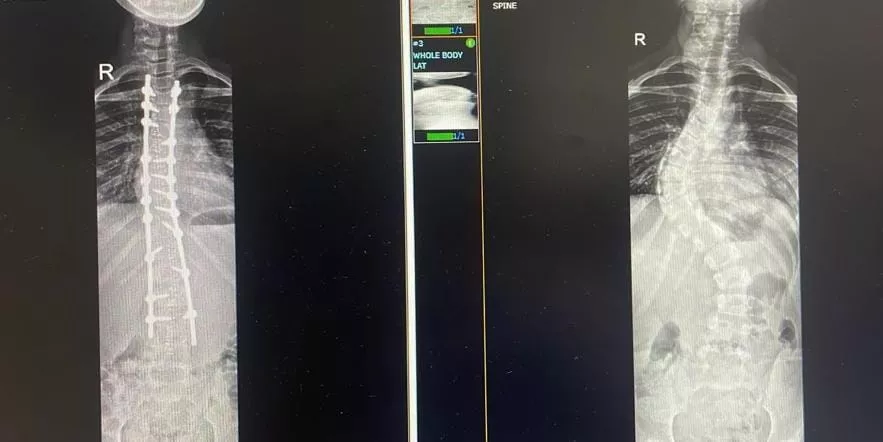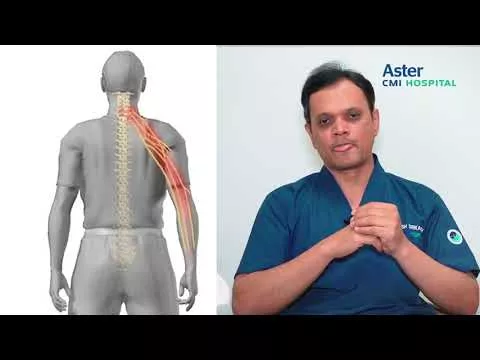Minimal Invasive spine surgery
Spinal surgery should fix what is wrong and protect what is right. At Aster CMI Hospital, our doctors specialize in state-of-the-art Minimally Invasive Spine Surgery (MISS) treatments. Our goal with MISS is simple - To accomplish better clinical outcomes than a traditional “OPEN” Surgery, using a less traumatic approach.
TRADITIONAL SPINE SURGERY
Traditional methods of spine surgery, or ‘open procedures’ require long incisions down the middle of the back with stripping of muscles and ligamentous attachments to the spine. Moreover, the muscles are pulled and held apart to grant a surgeon access to the spine for the entire surgery duration. This can range from one hour to several hours. The invasive and traumatic nature of open spine surgery, compromises the vital supporting structures of the spine that play an important role in maintaining the strength and flexibility of your back.
MISS(MININAL INVASIVE SPINE SURGERY METHOD)
A more recent method of performing spine surgery is called ‘minimally invasive spine surgery’ (MISS). Minimally invasive spine surgery techniques are far better for a patient because they aim to address the root cause of your spinal problem safely and completely, without disturbing the spine’s natural supporting structures.
WHAT WE DO IN MINIMALLY INVASIVE SPINE SURGERY?
Minimally invasive spine surgery allows for less trauma and damage to muscles, tendons, ligaments and joints as well as the bones of the spine. It also allows for less damage to any other surrounding tissues. The spine is able to be entered through incisions via tubular channels and endoscopes by a camera placed in the tube or with a high-power microscope visualizing directly through the tube.
In addition, surgeons may use CT or MRI data to view 3D computer models of their patient’s spine. The necessary incisions tend to be small. For example, one type of minimally invasive spine surgery called balloon kyphoplasty requires only two needle-size incisions. Furthermore, spinal fusion, a condition that previously required 4-6 inch incisions to be made during traditional open spine surgery, can now be treated using ½-1 inch incisions.
Muscle fibers are separated rather than cut and can resume their normal position after the instruments have been removed. This means that the patient experiences less pain and scarring following minimally invasive spine surgery. A very limited amount of ligament and bone is resected and at times none needs to be removed. The nerves are exposed to very little scarring. Screws, rods and clamps that require implantation to stabilize and realign the spine can now be inserted through very small incisions via what are referred to as percutaneous approaches. Damaged discs can be removed through very small openings into the disc, at times percutaneously as well.
Working through these small incisions endoscopes and microscopes can be utilized allowing excellent visualization of nerves, limiting the risk of damage. Interbody devices can then be placed into the disc spaces to maintain the disc space height through these very small openings and can then be expanded within the disc to the desired size. Artificial discs can be inserted to replace damaged discs via small abdominal incisions precluding any damage to the bones, muscles, tendons and ligaments of the spine. It is also now possible to remove a damaged disc and replace it with an interbody device through a small incision in the flank, again avoiding any significant damage to the muscles, ligaments and bone of the spine. New intraoperative x-ray imaging can allow for highly precise computer-guided placement of hardware such as pedicle screws into the spine. These techniques are continuously being refined and new techniques developed.
Benefits Of Minimally Invasive Spine Surgery
Minimally invasive spine surgery allows for faster recovery and often patients can now go home the next day following surgery. Blood loss is generally greatly reduced and the overall stress on the body is less pronounced. In addition, the risk of infection is lower. There are also less visible scars. Most importantly, with less damage to tissues of the spine the potential deleterious effects of spine surgery are minimized and the likelihood of injury to nerves both in the short term as well as long term is reduced. Another benefit of minimally invasive spine surgery is that it may be performed on patients that were formerly considered poor candidates for open spine surgery.
Why Aster?
We all know how the advent of data connectivity, GPS and Google Maps, has simplified road travel for the common man. We rarely feel the need to stop and to ask for directions. More importantly, we are able to reach the correct destination in the shortest possible time. Similarly, modern and state-of- the-art hospitals invest in and routinely use surgical navigation technologies. The use of surgical navigation systems along with advanced pre-surgery planning software has revolutionized a surgeon’s ability to visualize the anatomy in 3D and perform more accurate surgeries even through smaller skin incisions and narrow tubes. In addition, the use of intra-operative neuro monitoring ensures critical nerve structures are monitored and protected through the course of Spine surgery. At Aster, these advanced enabling technologies are used routinely to ensure MISS is performed with utmost accuracy, precision and safety.
Technology
We, at Aster CMI hospital, use the latest in state of the art technological equipment to priotise patient safety and best outcomes.
Neuromonitoring:
Intraoperative Neuromonitoring (IONM) also called as Intraoperative neurophysiological monitoring is a procedure that uses specialized equipment to evaluate function of the nervous system including nerves and spinal cord during neural surgeries. The role of intraoperative neuromonitoring is to provide immediate feedback and warning to the surgeon for prevention of permanent nerve injury during surgery.
It increases safety and improves outcomes during a spine surgery. The neural activity is measured in terms of electrically evoked potentials from the nerves with the help of a computer. It allows the real-time assessment of nerve tissue function during surgery, making the surgery safe. The IONM is also quick, painless, easy and inexpensive. It can record the nerve function multiple times and even throughout the entire process of surgery.
The operating theatres at Aster CMI hospital are equipped with dedicated neurophysiologists and the latest devices to improve patient outcomes
Microscope:
In Minimally invasive surgery, a very small incision is made and a tubular retractor is inserted and positioned on the spinal column to the site of the disease. Working with the naked eye is nearly impossibe in such cases. A surgical microscope provides the surgeon with an enhanced detailed view of the surgical site by delivering optimal illumination and magnification.
At Aster CMI, we have the latest 3D operating microscopes with high definition output. This enables our surgeons to perform minimally invasive spine surgeries with exceptional precision, focused on the diseased area while minimizing bleeding and surrounding tissue and muscle damage.
Navigation:
An advanced image-guidance system, similar to GPS systems in cars, navigation systems help guide surgeons as they perform delicate and intricate procedures near a person’s spine. These computer systems require the surgeon to reference images taken before the operation begins to guide them as surgery progresses.
This improves instrument placement accuracy in the operating room while reducing time, radiation and the number of X-rays necessary.
Studies show that being exposed to just three minutes of radiation increases a person’s lifetime risk of cancer by more than 1 percent. Given this widespread concern, every major medical society has committed to limiting the amount of radiation that people are exposed to during X-ray-guided medical procedures. During the past decade, this concern has expanded to include the operating room. A navigation system helps everyone in the operating room, including patients, reduce the risk of potentially significant amounts of radiation.
O-Arm:
We have recently introduced the ‘O-arm Imaging System’, which is the most advanced intra-operative 3-D surgical imaging equipment. Introduced for the first time in Bangalore, and second only in Southern India, the system is known for accurate and precision based Spine and Neurosurgery, irrespective of the complexity of the case, as is the case in Spinal deformity, Re-do surgeries or areas difficult to visualize with regular 2d imaging techniques.
Three-dimensional image guidance is an extremely useful adjunct for spinal surgery. Accurate screw placement provides better patient safety and reduces the in hospital stay thereby leading early patient mobilization and may reduce the cost incurred in patient management.
The O-Arm at Aster CMI is unique because the technology provides an impeccable view which helps the surgeon in visualising the complex and critical parts of the skeletal anatomy. The provision of full mobility motorization helps in an easy and comfortable positioning of the patient. There is less radiation to the operating room staff with a very easy workflow.
Our Doctors
We have some of the best specialists from around the world, they bring years of experience and offer evidence-based treatment to ensure the best care for you.
Treatments & Procedures
We provide comprehensive treatment for all types diseases under one roof. Our highly experienced doctors supported by especially trained clinical staff, ensure the best care for you.
FAQs
Want to find out more about the treatment? The answer to your questions can be found below.
Who are spine surgeons, and what do they do?
Spine surgeons are medical specialists trained to diagnose and treat conditions related to the spine. They perform surgeries to correct issues such as spinal deformities, injuries, and degenerative diseases. Their work often involves collaborating with other healthcare professionals to provide comprehensive care.
Patient Stories
Our patients are our best advocates, hear the inspiring stories of their treatment journey
Blogs
The source of trustworthy health and medical information. Through this section, we provide research-based health information, and all that is happening in Aster Hospital.


